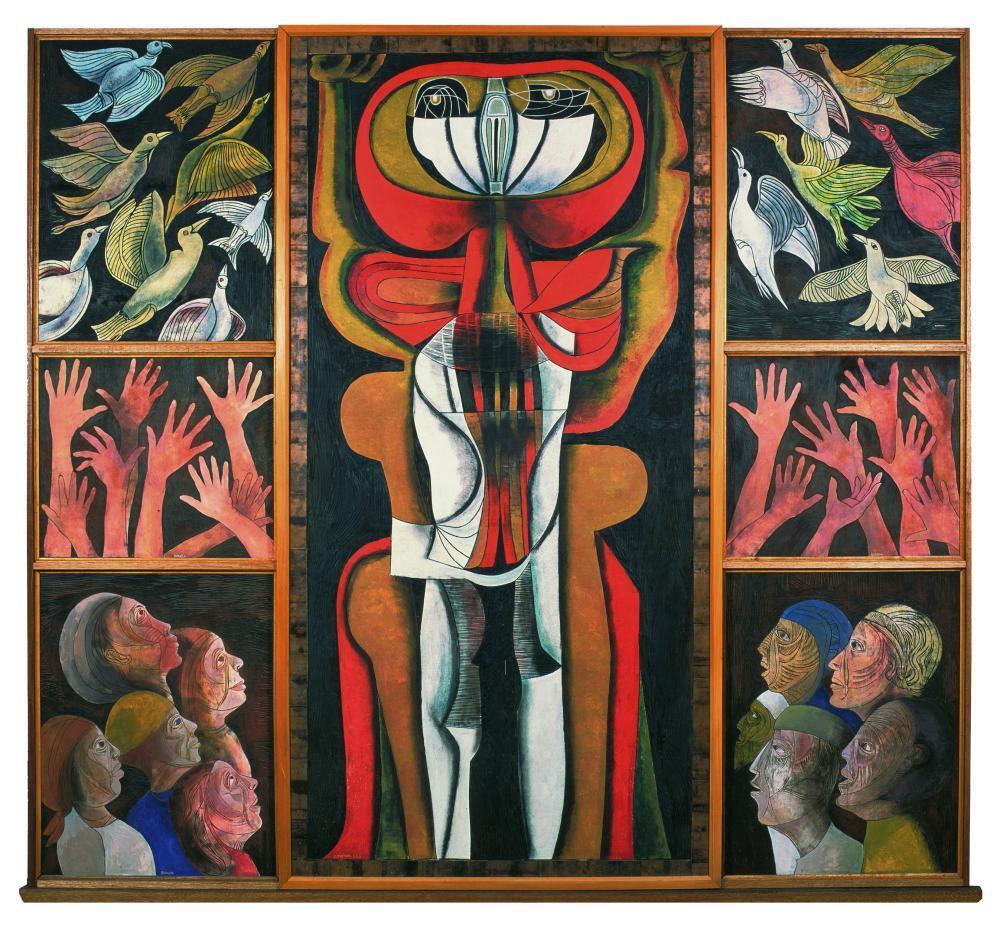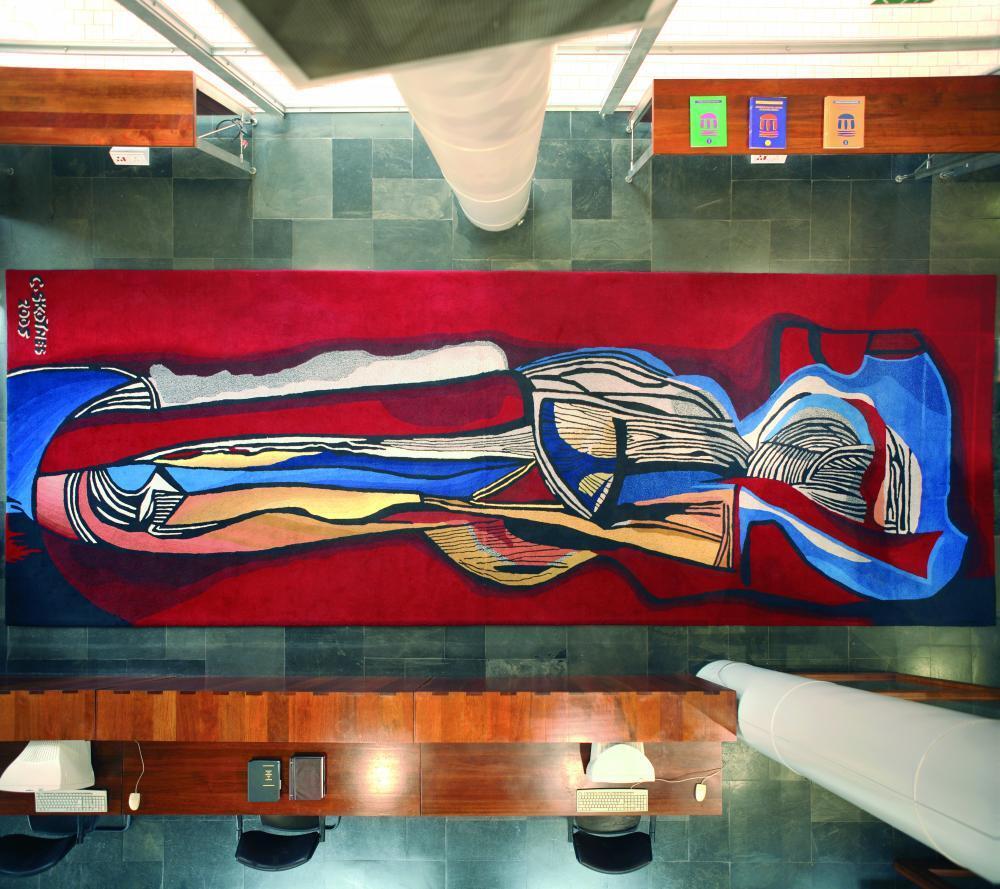Cecil Skotnes
| Artist Name: | Cecil Skotnes |
| Nationality: | South African |
| Year of birth: | 1926 |
| Year of death: | 2009 |
| Artist information: | Cecil Skotnes was born in 1926 in East London, Eastern Cape, and raised in Johannesburg. After high school, Cecil worked a while in a draughtsman's office before joining the South African Artillery in 1944, where he served in Egypt and Europe. Upon his return to South Africa, he earned a Bachelor of Arts in Fine Arts from the University of the Witwatersrand in 1951. In 1952, the Johannesburg City Council appointed him as Cultural Recreational Officer for the Polly Street Recreation Centre, which became the only art school available to Black students. That is also where he trained Sydney Khumalo and Ephraim Ngatane, among others. Encouraged by friend and mentor Egon Guenther, Skotnes turned his hand to woodcarving and produced many ground-breaking coloured carved panels and woodcut prints, often with images of neglected South African histories. He carried out significant public commissions, sometimes in collaboration with other artists such as Sydney Kumalo. He is mostly known for The Assassination of Shaka (1973) portfolio, which consists of 43 separate woodcuts to tell the story in visual format. And his 24 large panels of art in the Fountain Foyer area of the 1820 Settlers’ National Monument in Makhanda that were commissioned in 1984. He also worked on murals and carried out numerous public commissions in this medium. Skotnes’ work is held in institutional collections such as the South African National Gallery in Cape Town and the Constitutional Court Art Collection in Johannesburg. Skotnes dedicated much of his career to supporting the work of South African artists, championing them financially and critically; he was also recognised as a teacher and mentor. His contributions have been recognised by universities that have conferred honorary degrees on him, such as the University of Cape Town, the University of the Witwatersrand, and Rhodes University. He was awarded the Order of Ikhamanga in gold by the State President for service to the country, particularly for his contribution to the de-racialisation of South African art. The artist passed away in 2009. Sources: http://cecilskotnes.com/ [Accessed 30 August 2024] https://www.straussart.co.za/artists/cecil-skotnes [Accessed 30 August 2024] https://www.artnet.com/artists/cecil-skotnes/ [Accessed 30 August 2024] https://www.everard-read.co.za/artist/CECIL_SKOTNES/biography/ [Accessed 30 August 2024] https://www.contemporary-african-art.com/art-workshops.html [Accessed 30 August 2024] |

